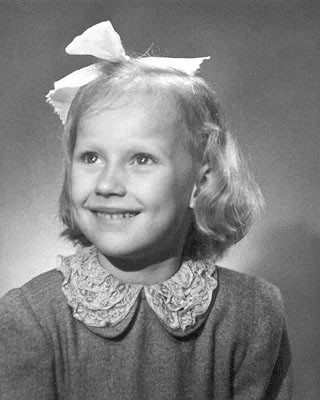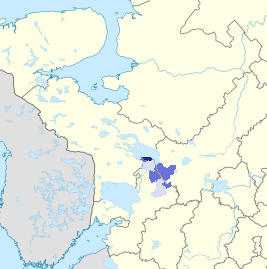|
Soviet Prisoners Of War In Finland
Soviet prisoners of war in Finland during World War II were captured in two Soviet-Finnish conflicts of that period: the Winter War and the Continuation War. The Finns took about 5,700 POWs during the Winter War, and due to the short length of the war they survived relatively well. However, during the Continuation War the Finns took 64,000 POWs, of whom almost 30 percent died. Winter War The number of Soviet prisoners of war during the Winter War (1939–1940) was 5,700, of whom 135 died.Westerlund (2008), p. 8 Most of them were captured in Finnish pockets ( motti) north of Lake Ladoga. The war lasted only 105 days and most of the deceased POWs were either seriously wounded or sick. Some of the POWs, at least 152 men, enlisted in the so-called Russian Liberation Army in Finland. They were not allowed to take part in combat. After the war, some members of the Liberation Army managed to escape to a third country.Juutilainen & Leskinen (ed.); Manninen, Ohto (1999), p. 814 After t ... [...More Info...] [...Related Items...] OR: [Wikipedia] [Google] [Baidu] |
Soviet POWs In Muujärvi Camp
The Soviet Union,. officially the Union of Soviet Socialist Republics. (USSR),. was a transcontinental country that spanned much of Eurasia from 1922 to 1991. A flagship communist state, it was nominally a federal union of fifteen national republics; in practice, both its government and its economy were highly centralized until its final years. It was a one-party state governed by the Communist Party of the Soviet Union, with the city of Moscow serving as its capital as well as that of its largest and most populous republic: the Russian SFSR. Other major cities included Leningrad (Russian SFSR), Kiev (Ukrainian SSR), Minsk (Byelorussian SSR), Tashkent (Uzbek SSR), Alma-Ata (Kazakh SSR), and Novosibirsk (Russian SFSR). It was the largest country in the world, covering over and spanning eleven time zones. The country's roots lay in the October Revolution of 1917, when the Bolsheviks, under the leadership of Vladimir Lenin, overthrew the Russian Provisional Government that ... [...More Info...] [...Related Items...] OR: [Wikipedia] [Google] [Baidu] |
Köyliö
Köyliö ( sv, Kjulo) is a List of former municipalities of Finland, former municipality of Finland. It was merged to the municipality of Säkylä on 1 January 2016. It was located in the Satakunta (region), Satakunta regions of Finland, region. The population of Köyliö was (30 June 2015) and covered a land area of . The population density was . The municipality was unilingually Finnish language, Finnish. It is said that the peasant Lalli murdered the English bishop Henry on the ice of Köyliönjärvi, Lake Köyliö in 1156 AD, during the First Swedish Crusade, first Swedish Crusade into Finland. A statue to Lalli was erected at Köyliö in 1989. Twinnings Before the 2016 consolidation, Köyliö was Town twinning, twinned with; * Nora Municipality, Nora, Sweden (1944) * Kõo Parish, Kõo, Estonia (1991) * Fladungen, Germany (1996) References External links * Municipality of Köyliö – Official website Köyliö, Municipalities of Satakunta Former municipali ... [...More Info...] [...Related Items...] OR: [Wikipedia] [Google] [Baidu] |
Captured Soviet Prisoners Of War Used For Working Duty 1941 Finland
{{disambiguation ...
Captured may refer to: * ''Captured'' (Journey album), 1981 * ''Captured'' (Rockwell album), 1985 * ''Captured'', a 1995 album by The Albion Band * ''Captured'' (Caroline's Spine album), 2007 * ''Captured'' (Christian Bautista album), 2008 * ''Captured'' (mixtape), a 2018 mixtape by Spice * ''Captured!'', a 1933 war film * ''Captured'' (1998 film), a 1998 thriller film * ''Captured'' (video game), a video game released in 1986 for the Commodore 64 * "Captured", a song by Heaven 17 See also *Capture (other) Capture may refer to: *Asteroid capture, a phenomenon in which an asteroid enters a stable orbit around another body *Capture, a software for lighting design, documentation and visualisation *"Capture" a song by Simon Townshend *Capture (band), an ... [...More Info...] [...Related Items...] OR: [Wikipedia] [Google] [Baidu] |
Nazi Concentration Camps
From 1933 to 1945, Nazi Germany operated more than a thousand concentration camps, (officially) or (more commonly). The Nazi concentration camps are distinguished from other types of Nazi camps such as forced-labor camps, as well as concentration camps operated by Germany's allies. on its own territory and in parts of German-occupied Europe. The first camps were established in March 1933 immediately after Adolf Hitler became Chancellor of Germany. Following the 1934 purge of the SA, the concentration camps were run exclusively by the SS via the Concentration Camps Inspectorate and later the SS Main Economic and Administrative Office. Initially, most prisoners were members of the Communist Party of Germany, but as time went on different groups were arrested, including "habitual criminals", "asocials", and Jews. After the beginning of World War II, people from German-occupied Europe were imprisoned in the concentration camps. Following Allied military victories, the ... [...More Info...] [...Related Items...] OR: [Wikipedia] [Google] [Baidu] |
Tarja Halonen
Tarja Kaarina Halonen (; born 24 December 1943) is a Finnish politician who served as the 11th president of Finland, and the first woman to hold the position, from 2000 to 2012. She first rose to prominence as a lawyer with the Central Organisation of Finnish Trade Unions (SAK), and as the Prime Minister's parliamentary secretary (1974–1975) and a member of the City Council of Helsinki (1977–1996). Halonen was a Social Democratic Party member of parliament from 1979 until her election to the presidency in 2000. She also served as a minister at the Ministry of Social Affairs and Health from 1987 to 1990, as Minister of Justice from 1990 to 1991, and as Minister for Foreign Affairs from 1995 to 2000. Halonen was an extremely popular president, with her approval ratings reaching a peak of 88 percent in December 2003. She was re-elected in 2006, defeating National Coalition Party candidate Sauli Niinistö in the second round by 51% to 48%. Ineligible to run in the 2012 president ... [...More Info...] [...Related Items...] OR: [Wikipedia] [Google] [Baidu] |
Simon Wiesenthal Center
The Simon Wiesenthal Center (SWC) is a Jewish human rights organization established in 1977 by Rabbi Marvin Hier. The center is known for Holocaust research and remembrance, hunting Nazi war criminals, combating anti-Semitism, tolerance education, defending Israel, and its Museum of Tolerance. The center has close ties to public and private agencies, and regularly meets with elected officials of the United States and foreign governments and with diplomats and heads of state. It is accredited as a non-governmental organization (NGO) at the United Nations, UNESCO, and the Council of Europe. The center publishes a seasonal magazine, ''In Motion''. The center is named in honor of Nazi hunter Simon Wiesenthal. Wiesenthal had nothing to do with its operation or activities other than giving its name, but he remained supportive of it. "I have received many honors in my lifetime," Wiesenthal once said, "when I die, these honors will die with me. But the Simon Wiesenthal Center will li ... [...More Info...] [...Related Items...] OR: [Wikipedia] [Google] [Baidu] |
Vepsians
Veps, or Vepsians ( Veps: ''vepsläižed''), are a Finnic people who speak the Veps language, which belongs to the Finnic branch of the Uralic languages. According to the 2002 census, there were 8,240 Veps in Russia. Of the 281 Veps in Ukraine, 11 spoke Vepsian (Ukr. Census 2001). The most prominent researcher of the Veps in Finland is Eugene Holman. The self-designations of these people in various dialects are ''vepslaine'', ''bepslaane'' and (in northern dialects, southwest of Lake Onega) ''lüdinik'' and ''lüdilaine''. Almost all Vepsians are fluent in Russian. The younger generation, in general, does not speak Vepsian although many have an understanding of the language. Geography In modern times, they live in the area between Lake Ladoga, Lake Onega and Lake Beloye – in the Russian Republic of Karelia in the former Veps National Volost, in Leningrad Oblast along the Oyat River in the Podporozhsky and Lodeynopolsky Districts and further south in the Tikhvinsky and Bo ... [...More Info...] [...Related Items...] OR: [Wikipedia] [Google] [Baidu] |
Votians
Votians, also referred to as Votes, Vots and Vods ( vot, Vađđalaizõd, et, vadjalased) are a Finnic ethnic group native to historical Ingria, the part of modern-day northwestern Russia that is roughly southwest of Saint Petersburg and east of the Estonian border-town of Narva. The Finnic Votic language spoken by Votians is close to extinction. The language is still spoken in three villages of historical Votia and by an unknown number of speakers in the countryside. The villages are '' Jõgõperä'' (Krakolye), ''Liivcülä'' (Peski), and ''Luuditsa'' (Luzhitsy).Eesti Rahva Muuseum: Vadjalased Votians were one of the founding people of . History ) , la ...[...More Info...] [...Related Items...] OR: [Wikipedia] [Google] [Baidu] |
Ingrian Finns
The Ingrians ( fi, inkeriläiset, ; russian: Ингерманландцы, translit=Ingermanlandts'i), sometimes called Ingrian Finns, are the Finnish population of Ingria (now the central part of Leningrad Oblast in Russia), descending from Lutheran Finnish immigrants introduced into the area in the 17th century, when Finland and Ingria were both parts of the Swedish Empire. In the forced deportations before and after World War II, and during the genocide of Ingrian Finns, most of them were relocated to other parts of the Soviet Union, or killed. Today the Ingrian Finns constitute the largest part of the Finnish population of the Russian Federation. According to some records, some 25,000 Ingrian Finns have returned or still reside in the region of Saint Petersburg. History Origins Finnish-speaking Ingrians are not to be confused with Izhorian-speaking Ingrians. Ingrian Finns mainly consist of two groups: ''Savakot'', who originated from migrant Savonians; and ''Äyrämöiset ... [...More Info...] [...Related Items...] OR: [Wikipedia] [Google] [Baidu] |
Karelians
Karelians ( krl, karjalaižet, karjalazet, karjalaiset, Finnish: , sv, kareler, karelare, russian: Карелы) are a Finnic ethnic group who are indigenous to the historical region of Karelia, which is today split between Finland and Russia. Karelians living in Russian Karelia are considered a distinct ethnic group closely related to Finnish Karelians, who are considered a subset of Finns. This distinction historically arose from Karelia having been fought over and eventually split between Sweden and Novgorod, resulting in Karelians being under different cultural spheres. In Russia, Karelians mostly live in the Republic of Karelia, where they are the designated ethnic group, and in other adjacent north-western parts of the country. They traditionally speak the Karelian language and are Eastern Orthodox Christians. There are also significant Karelian enclaves in the Tver and Novgorod oblasts, as some Karelians migrated to those areas after the Russo-Swedish War of 1656-16 ... [...More Info...] [...Related Items...] OR: [Wikipedia] [Google] [Baidu] |



.jpg)
